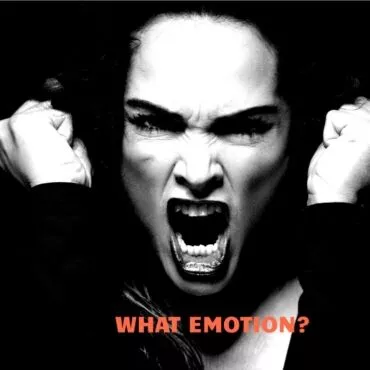Applying Parenting Emotion Coaching to Couples: Part 1 | Becoming Aware of Emotions
By Caralee Frederic
LCSW
SOURCES
I am the handout Queen, when it comes to giving my couples a tool they can easily reference and use.
Becoming emotionally intelligent means being more proficient in our emotion vocabulary and identifying where emotions are manifest in our own and our partner’s bodies.
One of the handouts I’ve constructed over the years is the “Applying Parenting Emotion Coaching to Couples.” It adapts information from the parenting book, “Raising An Emotionally Intelligent Child: The Heart of Parenting” by John Gottman, Ph.D.
The information also includes these sources:
To me, Emotion Coaching is the core of successful parenting and families.
Applying Parenting Emotion Coaching to Couples
HOW INTIMATE ARE YOU?
I had a conversation once with a wise woman who emphasized how little we know in our culture about creating and maintaining true intimacies, of which there are many. Not only sexual intimacy, but also emotional, physical, mental, social, spiritual, and intergenerational. It’s true! Look around. Everywhere you look people are less connected, less intimate, less knowing and less known, despite the technology that would enable more access to one another.
Going back to the basics of developing emotional intelligence in our everyday lives and relationships will help create intimacies in our relationships. These intimacies are good for us, our families, our communities and the world.
So what exactly is emotional intelligence? And how would couples create more of it?
To really understand these concepts and flush out your own unhealthy behaviors, let’s take these one at a time. A shift of your mindset will make you a more capable Emotion Coach, and more Emotion Coachable.
Emotionally intelligent couples are more likely to feel connected, supported, and loved in their intimate relationship. And, emotionally intelligent couples are more likely to raise emotionally intelligent children.
Shift #1: Becoming aware of emotions – your own and others.
Most of us in American culture can list about five emotions off the top of our head. I often invite my clients to rattle off a list of emotions. Almost everyone says some variation of angry, sad, happy, frustrated and scared.
That’s why one of my other well-used handouts is the longest list of emotion words I could find. “The Sedona Method” features nine columns of words. Six columns list the harder, uncomfortable emotions; and three columns list the easier, acceptable emotions.
So How Do I Revive the Romance?
There are well over 400 words listed in “The Sedona Method.” Building a vocabulary for emotion is key to being able express ourselves and to recognizing emotion in others. It only takes a few tries before most of my clients are able to name off a dozen, accurate words for what they’re feeling. This gives their partner a better chance of understanding them and “getting” them.
In later sessions, couples will either pull out their copy or ask for another copy so they can get the “right” feeling word. Just putting a name to what we’re feeling has a soothing effect on our nervous system. I encourage my couples to continue sharing emotion words with one another in their daily life. In a formal way, sharing feelings becomes one of the “dailies” homework I give them: Share with each other two feelings you’ve felt today, then tell about the first time you remember having that emotion.
In a more playful way, I suggest writing feeling words on a ball big enough to toss around. Whatever word your thumb lands on, tell about when you feel/felt that emotion. Feelings charades is also a fun way to expand the emotional vocabulary with kids.
Another, equally important part of becoming aware of emotions is to identify where, in our body, we feel our emotions. Scanning our body for tension or discomfort when we feel an emotion or think about an emotional event is one way to target the physiology of emotions. Knowing if I hold my breath, clench my jaw, furrow my brow, get “butterflies” in my stomach, or a headache in relation to my emotions is an important part of emotional awareness. Once I’m aware, I can then focus my attention on that area of my body to intentionally soften and release any tension held in that area.
As we become more aware of our own emotions, we will become more attuned to the expressions of emotions in others. In “Emotions Revealed,” author Paul Ekman teaches us that facial and body expressions for basic emotions are universally recognized in all cultures. The facial expression and physiological reaction of sadness or sorrow is distinct from the expressions for anger, fear and happiness.
While this might sound obvious at first glance, visually misinterpreting the emotions of one another is a source of major conflict.
Imagine the difference it could have made one of your last arguments with your partner. How did you read his or her emotions? Was your assessment correct? What if your partner’s thoughts and feelings were different than how you interpreted them? Would you have reacted differently? More softly? Less harshly?
How would you describe her emotions? Angry? Maybe frighteningly angry?
One of my methods in couples counseling is to teach partners to improve their emotional intelligence. They learn to be each other’s Emotion Coach and to be Emotion Coachable.
Couples who achieve this are successful in their relationship.
I’ve outlined five paradigm shifts about emotions and the use of them. These paradigm shifts are the basis of Emotion Coaching or Emotional Intelligence.
In the upcoming weeks, I will discuss these five paradigm, or mindset shift, in my blog.
As I explained in this blog, Shift #1 is to become aware of emotions — your own and others. Expand your vocabulary of emotions. When we can correctly name and identify the emotions in ourselves and our partner, we have a better chance of mutual understanding.
Now, try again. How is she feeling? Maybe she is angry, but perhaps these words would be more accurate: frustrated, indignant, outraged.
Maybe she is fearful and, more precisely, scared, threatened, trapped, defensive.
How does this paradigm shift effect your reaction to her?












